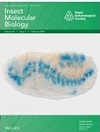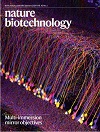Latest Publications
Manipulating multi-level selection in a fungal entomopathogen reveals social conflicts and a method for improving biocontrol traits
 Zoltan Erdos, David J. Studholme, Manmohan D. Sharma, David Chandler, Chris Bass, Ben Raymond
Zoltan Erdos, David J. Studholme, Manmohan D. Sharma, David Chandler, Chris Bass, Ben Raymond
Changes in parasite virulence are commonly expected to lead to trade-offs in other life history traits that can affect fitness. Understanding these trade-offs is particularly important if we want to manipulate the virulence of microbial biological control agents. We hypothesized that manipulating selection intensity at different scales would reveal virulence trade-offs in a fungal pathogen of aphids, Akanthomyces muscarius. Starting with a genetically diverse stock we selected for speed of kill, parasite yield or infectivity by manipulating competition within and between hosts and between-populations of hosts over 7 rounds of infection. We found that early sporulation led to reduced competitive fitness but could increase yield of spores on media, a trade-off characteristic of social conflict. Notably, the selection regime with strongest between-population competition and lowest genetic diversity produced the most consistent shift to early sporulation, as predicted by social evolution theory. Multi-level selection therefore revealed social interactions novel to fungi and showed that these biocontrol agents have the genomic flexibility to improve multiple traits—virulence and spore production—that are often in conflict in other parasites.
Early Detection of Fusarium Basal Rot Infection in Onions and Shallots Based on VOC Profiles Analysis
 Malgorzata Wesoly, Emma Daulton, Sascha Jenkins, Sarah van Amsterdam, John Clarkson and James A. Covington
Malgorzata Wesoly, Emma Daulton, Sascha Jenkins, Sarah van Amsterdam, John Clarkson and James A. Covington
In this work, we employed Gas chromatography ion-mobility spectrometry (GC-IMS) technology for early detection of Fusarium basal rot in brown onion, red onion, and shallot bulbs and for tracking disease progression during storage. The volatile profiles of the infected and healthy control bulbs were characterized using GC-IMS and gas chromatography-time-of-flight mass spectrometry (GC-TOF-MS). GC-IMS data combined with principal component analysis and supervised methods provided discrimination between infected and healthy control bulbs as early as 1 day after incubation with the pathogen, classification regarding the proportion of infected to healthy bulbs in a sample, and prediction of the infection’s duration with an average R2 = 0.92. Furthermore, GC-TOF-MS revealed several compounds, mostly sulfides and disulfides, that could be uniquely related to Fusarium basal rot infection.
Genome assembly and transcriptomic analysis to elucidate the ability of Nasonovia ribisnigri to break host plant resistance
 Dion Garrett, Graham Teakle, Rosemary Collier, James R. Bell, Sergio Cerezo-Medina, Ramiro Morales-Hojas
Dion Garrett, Graham Teakle, Rosemary Collier, James R. Bell, Sergio Cerezo-Medina, Ramiro Morales-Hojas
The currant-lettuce aphid (Nasonovia ribisnigri (Hemiptera: Aphididae) (Mosley)) is a cosmopolitan pest of outdoor lettuce. Until recently, the use of resistant cultivars was an effective method for managing N. ribisnigri. A resistant cultivar containing a single gene (Nr-locus), introduced in the 1980s, conferred complete resistance to feeding. Overreliance of this Nr-locus in lettuce resulted in N. ribisnigri's ability to break resistance mechanism. Our work attempts to understand which candidate gene(s) are associated with this resistance-breaking mechanism. We present two de novo draft assembles for N. ribisnigri genomes, corresponding to both avirulent (Nr-locus susceptible) and virulent (Nr-locus resistant) biotypes.. Out of the 18,872 differentially expressed genes, a single gene/locus was identified in N. ribisnigri that was shared between two resistant-breaking biotypes. This locus was further explored and validated in Real-Time Quantitative Reverse Transcription PCR (qRT-PCR) experiments and has predicted localisations in both the cytoplasm and nucleus. This is the first study to provide evidence that a single gene/locus is likely responsible for the ability of N. ribisnigri to overcome the Nr-locus resistance in the lettuce host.
Genetic manipulation of Indian mustard genotypes with WRR-gene(s) confers resistance against Albugo candida
 Nirwan, Shradha, Chatterjee, Anupriya, Cevik, Volkan, Holub, Eric B., Jones, Jonathan D. G., Tewari, Anand Kumar, Shrivastava, Neeraj, Agnihotri, Abha and Sharma, Pankaj
Nirwan, Shradha, Chatterjee, Anupriya, Cevik, Volkan, Holub, Eric B., Jones, Jonathan D. G., Tewari, Anand Kumar, Shrivastava, Neeraj, Agnihotri, Abha and Sharma, Pankaj
In an effort to develop resistant plants, Agrobacterium mediated genetic transformation of three B. juncea genotypes viz., susceptible host var. Varuna, along with its doubled haploid mutant lines C66 and C69 (showing moderate tolerance to field isolates of A. candida) was initiated to transfer resistance genes (WRR8Sf-2 and WRR9Hi-0) identified in Arabidopsis thaliana against race Ac2V, that encode for Toll-like/interleukin-1 receptor-nucleotide binding-leucine-rich repeat proteins that recognize effectors of the pathogen races. Our results demonstrate that introduction of resistance genes from a tertiary gene pool by genetic transformation enhances disease resistance in B. juncea genotypes to a highly virulent Ac2V isolate.
Slow release of a synthetic auxin induces formation of adventitious roots in recalcitrant woody plants
 O Roth, S Yechezkel, O Serero, A Eliyahu, I Vints, P Tzeela, A Carignano, DP Janacek, V Peters, A Kessel, V Dwivedi, M Carmeli-Weissberg, F Shaya, i Faigenboim-Doron, KL Ung, B Panyella Pedersen, J Riov, E Klavins, C Dawid, Z Hammes, N Ben-Tal, R Napier, E Sadot, R Weinstain
O Roth, S Yechezkel, O Serero, A Eliyahu, I Vints, P Tzeela, A Carignano, DP Janacek, V Peters, A Kessel, V Dwivedi, M Carmeli-Weissberg, F Shaya, i Faigenboim-Doron, KL Ung, B Panyella Pedersen, J Riov, E Klavins, C Dawid, Z Hammes, N Ben-Tal, R Napier, E Sadot, R Weinstain
Clonal propagation of plants by induction of adventitious roots (ARs) from stem cuttings is a requisite step in breeding programs. Due to the central role of auxin in organogenesis, indole-3-butyric acid is often used as part of commercial rooting mixtures, yet many recalcitrant plants do not form ARs in response to this treatment. Here we describe the synthesis and screening of a focused library of synthetic auxin conjugates in Eucalyptus grandis cuttings and identify 4-chlorophenoxyacetic acid-L-tryptophan-OMe as a competent enhancer of adventitious rooting in a number of recalcitrant woody plants, including apple and argan. Comprehensive metabolic and functional analyses reveal that this activity is engendered by prolonged auxin signaling due to initial fast uptake and slow release and clearance of the free auxin 4-chlorophenoxyacetic acid. This work highlights the utility of a slow-release strategy for bioactive compounds for more effective plant growth regulation.
Interactions of long-term grazing and woody encroachment can shift soil biogeochemistry and microbiomes in savanna ecosystems
Ryan M. Mushinski, Yong Zhou, Ayumi Hyodo, Claudio Casola, Thomas W. Boutton
 We investigated the interactions between livestock grazing history (none, moderate, heavy) and vegetation cover (grassland, juniper, oak) using a ∼ 70-year grazing experiment in west-central Texas. We explored effects on soil organic carbon (SOC), total nitrogen (TN), total phosphorus (TP), microbial community composition, and function. The findings highlight how long-term livestock grazing and woody plant encroachment influence soil C, N, P cycles, altering soil microbial community structure and function. This study provides insights for savanna ecosystem management and integrating land cover effects into biogeochemical models for global change scenarios.
We investigated the interactions between livestock grazing history (none, moderate, heavy) and vegetation cover (grassland, juniper, oak) using a ∼ 70-year grazing experiment in west-central Texas. We explored effects on soil organic carbon (SOC), total nitrogen (TN), total phosphorus (TP), microbial community composition, and function. The findings highlight how long-term livestock grazing and woody plant encroachment influence soil C, N, P cycles, altering soil microbial community structure and function. This study provides insights for savanna ecosystem management and integrating land cover effects into biogeochemical models for global change scenarios.
